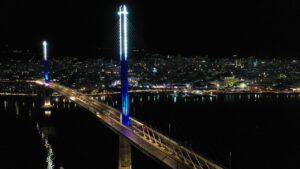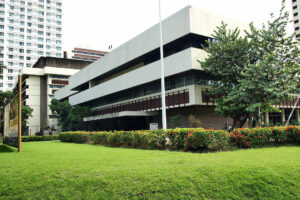Competitive Philippine property landscape

By Joey Roi Bondoc
Editor’s note: This is the first of a two-part column on the Philippines’ competitive property landscape.
OVER THE YEARS, Colliers has seen the proliferation of more office and residential hubs outside Metro Manila. In our view, this bodes well for the Philippine economy as more economic centers rise. This means that economic development also spreads outside of Metro Manila and indicates that property sector growth is broad-based and not just focused on a single location.
Colliers believes that this pace of progress has been facilitated by an improving infrastructure and overall local government competitiveness, as measured by economic dynamism, innovation, quality of manpower, resiliency, among other factors.
Major property firms are expanding their options as they see a strong revival of the country’s property market post-COVID-19. Undeniably, Metro Manila remains a major investment destination, but developers are setting their sights on other urban areas.
In our view, this decentralization thrust is likely to be supported by the continued implementation of public projects outside Metro Manila. These include airports, bus rapid transits, cargo and passenger railways. Overall, the country’s infrastructure push should guide the expansion plans of developers around the country.
The infrastructure projects implemented by previous administrations have dictated developer strategies. The implementation of key infrastructure projects nationwide has provided access to properties that could be redeveloped into mixed commercial, residential, hotel/leisure and industrial estates. These projects also helped the government bring economic opportunities to areas outside the Philippine capital.
Due to road projects, for instance, business opportunities have spilled over to nearby areas such as Cavite, Laguna, Bulacan, Tarlac, and Pampanga in Luzon.
In the Visayas region, Cebu remains the primary property investment hub, but other locations are starting to catch up with the likes of Iloilo and Bacolod cornering substantial investments from national and homegrown developers.
In Mindanao, Davao remains the most attractive property investment destination.
Overall, Colliers Philippines believes that developers will continue to venture into residential projects in second-tier and third-tier cities all over the country, where demand comes from end-user buyers. The markets may be smaller compared to Metro Manila but more stable in terms of end-user housing demand.
With a thriving property landscape post-pandemic, Colliers also projects the development of offices, malls, hotels, and industrial parks outside of the capital region.
Moving forward, we see local government units competing for more investments and this competitive landscape should result in a more diverse Philippine property market, eventually benefiting investors and end-users.
POST-PANDEMIC ‘CEBOOM’Cebu remains one of the most attractive and largest residential hubs outside of Metro Manila. The launch of higher-priced condominium units outside of Cebu City such as Mandaue also indicates property firms’ confidence in the purchasing power and rising affluence of Cebuano investors.
Colliers is starting to see the proliferation of upscale to luxury condominium units in major residential hubs outside Metro Manila, especially Metro Cebu. In our view, demand for these projects will partly be sustained by the recovery of the tourism sector which should propel renewed interest in leisure-oriented properties.
Cebu’s improving infrastructure also plays an important role in retaining the locale’s stature as a residential investment destination. The recently-completed Cebu–Cordova Link Expressway (CCLEX) should raise the attractiveness of fringe locations such as Talisay, Liloan and Consolacion for residential developments. Other upcoming infrastructure projects include the Metro Cebu Expressway and Cebu Bus Rapid Transit, both of which are due for completion in 2025.
DAVAO: MINDANAO’S MAJOR PROPERTY HUBColliers Philippines believes that the entry of national players in Davao has paved the way for substantial development of integrated communities. Hence, developers should continue with their land banking initiatives and capitalize on the city’s improving infrastructure backbone.
The National Government has lined up vital infrastructure projects in the city which, once completed, should further solidify the city’s attractiveness as a residential investment hub. These include the Davao Coastal Road, Davao City Bypass and the expansion of the Davao Airport.
Residential developers should further test the market and even diversify, especially with the rising viability of upscale and luxury projects amongst investors and end-users. In our view, Davao’s competitiveness and stature as an outsourcing hub in Mindanao, backed by regional economic growth, should retain the city’s attractiveness for more residential projects.
BACOLOD: A PROPERTY SWEET SPOTBacolod City is attracting national players and we see this resulting in the development of more township developments and a further expansion of the city’s residential stock. The entry of national developers is also raising the prices of vertical projects, reflecting property firms’ confidence in the purchasing power of Bacolod city’s investors and end-users.
Developers should further assess Bacolod market’s reception towards luxury projects, especially in light of newly launched residential towers by national developers.
In our view, property firms are likely to further test the upscale and luxury segments over the next 12 to 24 months. Colliers believes that residential demand will also be supported by the development of integrated communities in the city. Bacolod should also benefit from the upcoming Panay-Guimaras-Negros Link Bridge. Construction for the project will begin in 2025.
ILOILO RISINGIloilo’s thriving business landscape is partly buoyed by a continuously expanding outsourcing sector which continues to attract national developers to launch more residential projects in the city.
While residential condominium developments are concentrated in Mandurriao, Iloilo’s main business district, some developers are beginning to explore other districts for upscale and luxury residential developments. We encourage national players to take advantage of the city’s growing investor and end-user market.
Developers should also maximize their projects’ proximity to infrastructure. Major public projects in the city include the Ungka II Flyover which will traverse Pavia, Hibao-an and Buhang. The flyover is expected to reduce travel time from Iloilo City to Iloilo International Airport from 45 minutes to 20 minutes. The flyover is set to be completed in 2025.
Iloilo is one of the most competitive cities in the Philippines backed by skilled workforce and quality infrastructure backbone. Hence, we see Iloilo attracting major local and foreign investments in the near to medium term.
(To be continued next week)
Joey Roi Bondoc is the research director at Colliers Philippines.




